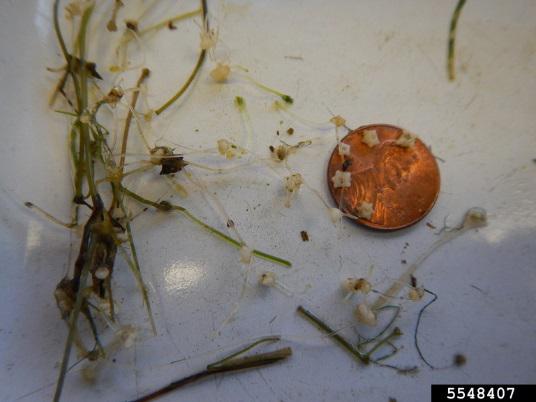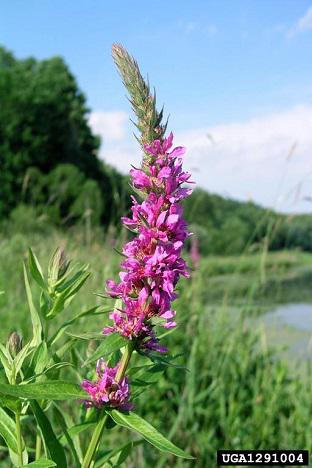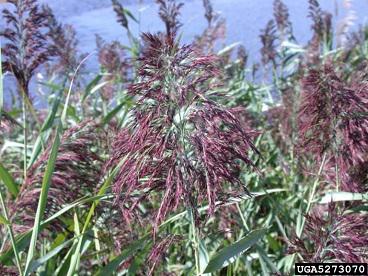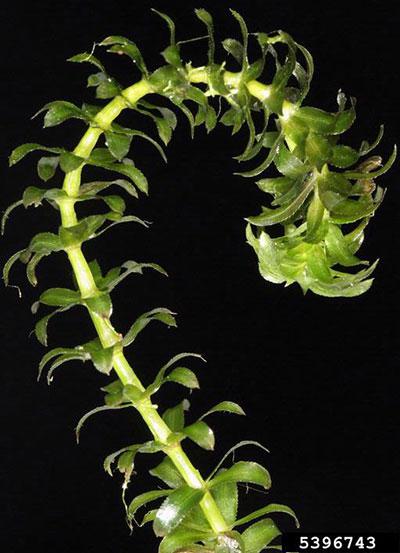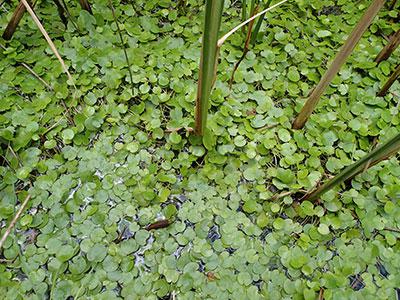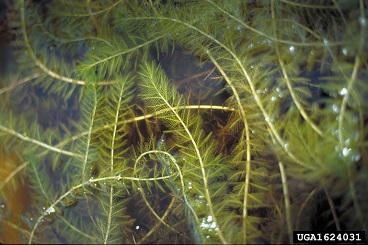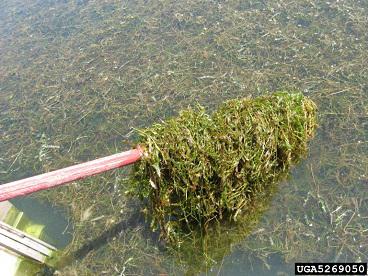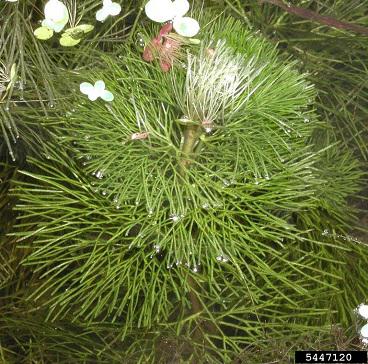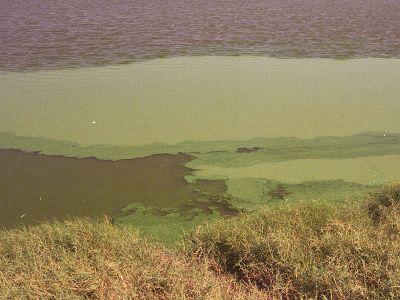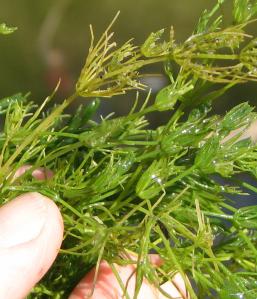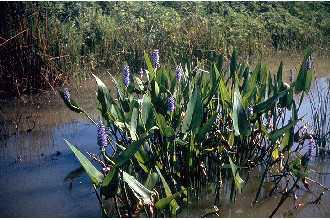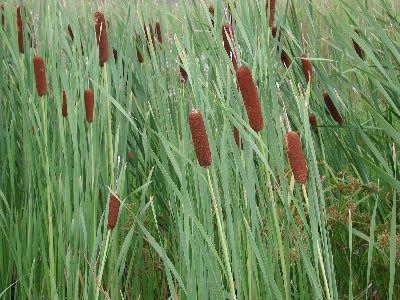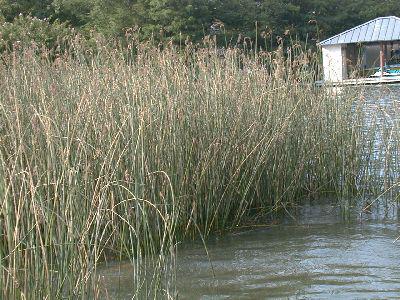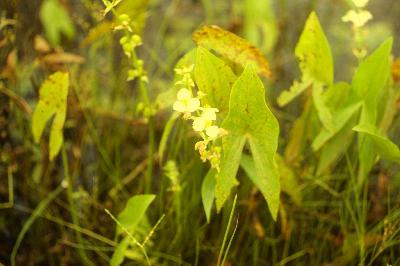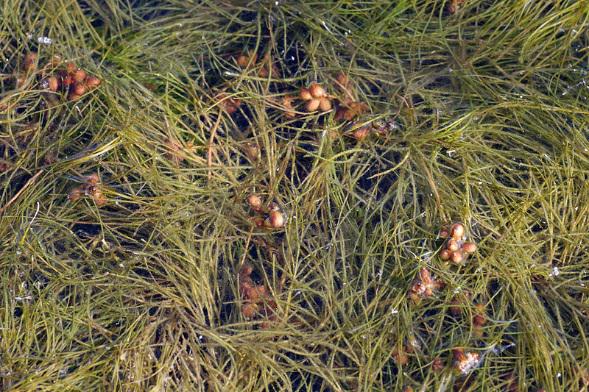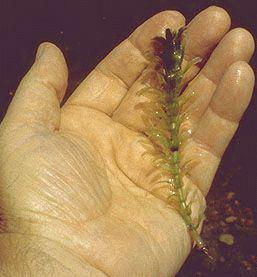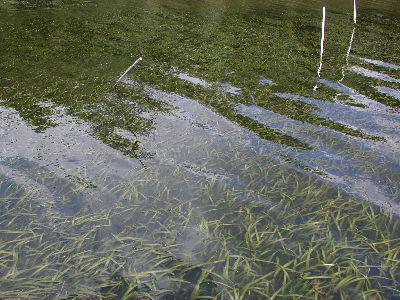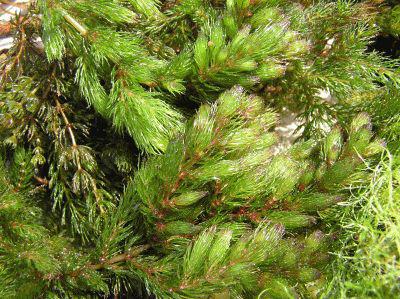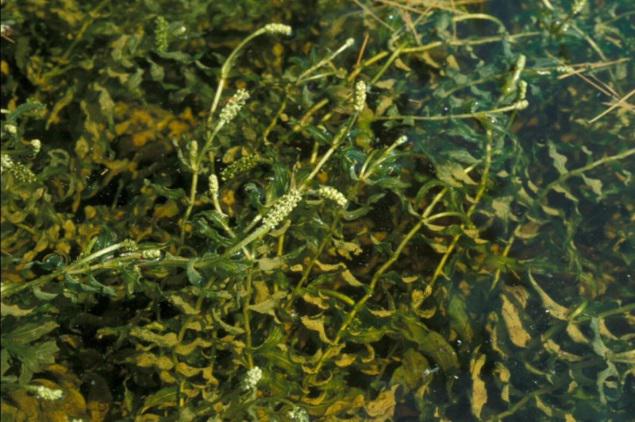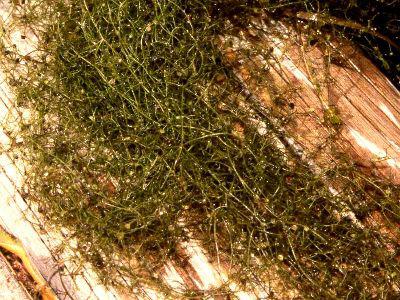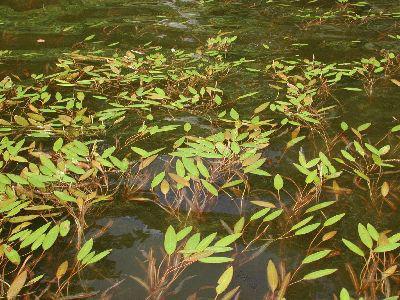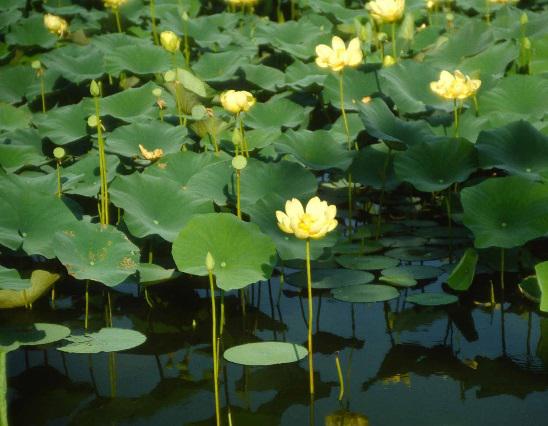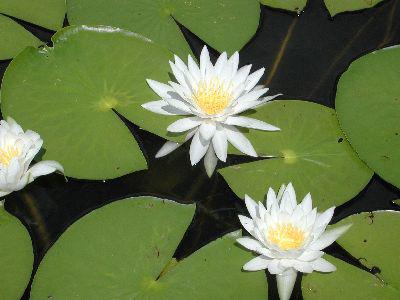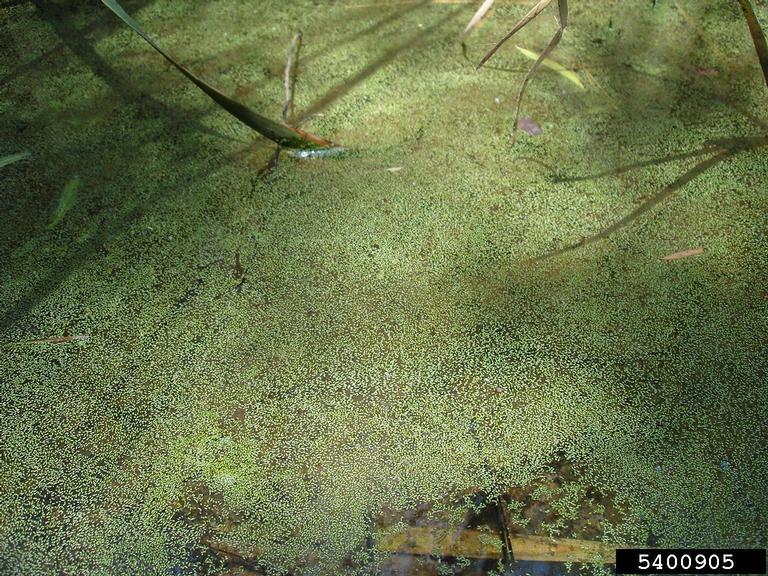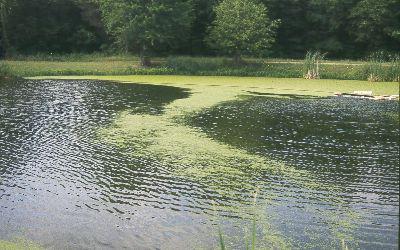Invasive Species
Starry Stonewort (Nitellopsis obtuse) – Prohibited in Michigan
Starry Stonewort looks like a plant but is a macroalga. The stems are made up of several giant cells that are held together by “nodes” consisting of several smaller cells. Star shaped bulbils are produced at the nodes and are generally 3-6 mm wide. It invades lakes, ponds, and slow-moving rivers. It can be found…
Purple Loosestrife (Lythrum salicaria) – Restricted in Michigan
This is a perennial herb with a woody, square stem. Leaves are arranged in whorls. They are lance shaped, stalk less and heart shaped or rounded at the base. The plant can grow from 4-10 feet along roadsides and in wetlands. They produce magenta colored flower spikes with 5-7 petals. Concern: With the right conditions,…
Phragmites (Common Reed) (Phragmites australis) – Restricted in Michigan
Leaves are green to grayish-green, flat and smooth. This is a perennial grass that can grow up to 15 feet tall. The flowers grow dense, branched clusters on the end of each stem that are open, and feathery at maturity. This is a native plant, but there is a strain of this species that is…
Hydrilla (Hydrilla verticillate) – Watch List – Prohibited in Michigan
Leaves are bright green with visible saw-toothed margins and are rough. Leaves grow in whorls of 4-8 along the stem. The stems are very slender, can grow up to 30 feet long and branch out considerably near the water surface. This is a submerged aquatic plant. Concern: Hydrilla is a threat to native aquatic ecosystems.…
European Frog-bit (Hydrocharis morsus-ranae) – Watch List – Prohibited in Michigan
Leaves are small, kidney-shaped to heart shaped with a purple-red underside. It is free floating or sometimes rooted in shallow water. It is often found amongst cattails. It has a single white flower with 3 round petals and a yellow center. Concerns: Dense mats can form preventing nutrients and light from reaching submerged vegetation. When…
Eurasian Watermilfoil (Myriophyllum spicatum) – Restricted in Michigan
Leaves are greyish-green with finely divided pairs of leaflets that give it a feather like appearance. Leaves are arranged in whorls of 3-6 around the stem at each node. Each leaf generally has 12 or more leaflet pairs. This is an emergent, herbaceous aquatic plant. Concerns: Eurasian watermilfoil is very aggressive and will shade out…
Curly Leaf Pondweed (Potamogeton crispus) – Restricted in Michigan
Leaves are dark green with wavy, serrated margins. Oblong, stiff translucent leaves have distinctly wavy edges with fine teeth and 3 main veins. This is a submersed weed with thick roots. It can reach up to 2 meters long, with the flowering spike growing above the water’s surface. Concerns: Curly Leaf Pondweed out-competes native aquatic…
Carolina Fanwort (Cabomba caroliniana) -Prohibited in Michigan
Leaves are underwater, approximately 2 inches across and divided into fine branches. Flowering branches grow above the water surface with diamond shaped leaves. Flowers are small and range from white to pale yellow. The stem is usually less than 10 feet, but can reach 33 feet. Concerns: Dense mats can form which will alter oxygen…
Algae
Planktonic Algae (Chlamydomonas, Chorella, Euglena, Closterium, Anacystis spp., etc.)
This is microscopic algae that float in the water column, that grow very quickly. A bloom of the algae causes the water to become colored and can look green, blue, or reddish. Severe blooms often resemble pea soup or you may see a paint-like scum on shorelines. Concern: Planktonic algae is good for water bodies…
Filamentous Algae (Spirogyra, cladophore and many other varieties)
This is commonly referred to as “pond scum”. It has a thread like appearance and often forms surface mats. Growth begins at the bottom of shallow water or on structures in the water and rises to the surface as oxygen becomes trapped by the filaments. Concern: Algae blooms have been a major factor in fish…
Chara (Muskgrass)
This is an advanced form of algae often mistaken as a submerged flowering plant. It is often called muskgrass or skunkweed because of its foul odor. It is a gray-green color, has no flowers and will not extend above the water surface. It has a grainy or crunchy texture and cylindrical whorled branches with 6-16…
Blue-Green Algae (Cyanobacteria)
It is most often blue-green in color, but can also be blue, green, reddish-purple, or brown. It generally grows in lakes, ponds, and slow-moving streams when the water is warm and enriched with nutrients. Concerns: Discolored water, reduced light penetration, taste and odor problems, dissolved oxygen depletions during die-off, and toxin production. Due to oxygen…
Emergent Weeds
Pickerelweed (Pontederia cordata)
The leaves are glossy and heart shaped with long, air-filled stocks and firm blades. The leaf-blades have fine parallel veins. The leaves and flowers are above the water level and can reach 3.5 feet in height. The flower is a violet-blue color and lasts only a day. Concern: When they grow out of control it…
Cattail (Typpha spp.)
Leaves are flat to slightly rounded and can grow from 5-10 feet tall. They are a pale grayish-green in color. The stem reaches 5-10 feet tall, that is larger in the middle and smaller near the flower structure. Flowers are a dense dark brown, cigar-shape at the end of the spikes. Concern: Cattails reproduce rapidly…
Bulrush (Scirpus spp.)
There are several species of bulrush. They can grow up to 10 feet tall in shallow water or moist soil. The color can vary from light gray-green to dark olive green. There are no obvious leaves on the stems. They grow sheaths at the base of the stem. Concern: When they grow out of control…
Arrowhead (Sagittaria spp.)
Leaves are shaped like an arrowhead. They grow in clusters from the base and can be from less than a foot tall to over 4 feet tall. It may have some elliptical emergent leaves and sometimes will also have ribbon, or tongue-like submersed leaves. It has underground rootstocks with tubers and may have tiny white…
Submergent Weeds
Naiad (Najas spp.)
Forms very dense stands of rooted submerged vegetation. Leaves are dark green to greenish-purple, ribbon-like, opposite or in a whorl of three. The stems are very long and have many branches. Can often be confused with sago pondweed. Concern: If it becomes too dense it can reduce boat traffic and impede water flow in drainage…
Sago Pondweed (Stuckenia pectinata)
A perennial plant that arises from thickly matted rhizomes and has no floating leaves. The stems are thin, long, and highly branching with leaves very thin and filament-like. It is generally completely submersed except the reproductive stalk that peaks above the water. Concern: Dense formations can limit movement of predator fish and inhibit fishing. Because…
Northern Watermilfoil (Myriophyllum Sibiricum)
Northern watermilfoil is often confused with Eurasian watermilfoil. Northern Watermilfoil is a native plant that has a light-colored stem and feathered like leaves. They usually have 5-12 pairs of leaflets. Concern: Can inhibit recreational activities such as swimming, boating, and fishing. We are the lake management authorityContact Us Today For A Consultation
Large Leaf Pondweed
This plant has thick, large stems and broad leaves. The submerged leaves appear wavy and taper toward the stem. Floating leaves are egg shaped. Concerns: If it grows out of control it can interfere with recreational activities. We are the lake management authorityContact Us Today For A Consultation
Elodea (Elodea canadensis)
Leaves are broad and oval. It is often mistaken for Hydrilla. The leaves are dark green blade-like and are in whorls of three. Whorls are compact near the growth tip with spacing between the whorls gradually increasing as you go down the stem. Concerns: Can inhibit recreational activities such as swimming, boating and fishing. We…
Eel Grass (Wild Celery) (Vallisneria Americana)
A rooted, submerged plant often found in flowing water. The leaves are long, thin, ribbon-like and are commonly 3-4 feet long and clustered. The vein pattern in the leaves are very distinctive and resembles celery. Concern: Dense areas can interfere with recreational activities. We are the lake management authorityContact Us Today For A Consultation
Coontail (Ceratophyllum Demersum)
This is a free-floating, rootless submerged plant that often forms dense colonies. Leaves are green, forked, serrated and somewhat stiff or crunchy, with small teeth along one margin. It reproduces through very small seeds and fragmentation. Concern: If it grows out of control it can create a scummy appearance, limit fishing access, and interfere with…
Clasping Leaf Pondweed (Potamogeton Richardsonii)
The leaves partially surround the stem, they are densely spaced, lance shaped and have wavy or crinkled margins that often curve backwards. They have distinct veins and can be 2-13 cm long and 1-3 cm wide. Often mistaken for curly-leaf pondweed. Concern: Can form dense mats interfering with boating and fishing activities. Also, can block…
Bladderwort (Utricularia spp.)
This is a free-floating plant that has no roots and has flowers on erect stems above the water. The plant is about 8 inches tall with yellowish flowers that have 3-lobes and a spur underneath. There are no true leaves on this plant. There are leaf branches called petioles that are fleshy and inflated with…
American, Long-leaf Pondweed (Potamogeton nodosus)
There are both floating and submerged leaves. The floating leaves are elliptical to oval and are 4-7 inches long and up to 2 inches wide. The submerged leaves are blade like, somewhat transparent and smaller than the floating leaves. The stem is rust colored and branched in threes. Concern: Can form dense mats and block…
Floating Weeds
Yellow Pond Lily (Nuphar advena)
A perennial plant with leaves that arise form a large spongy rhizome. The leaves have a slit that makes them roughly heart-shaped and can float on the surface or stand on the surface on thick round stalks. Flowers are spiracle with green sepals and yellow petals. Flowers can float on the water or stand above…
White Water Lily (Nymphaea Odorata)
The leaves are round, smooth, green, leathery and have a slit on one side. The underside is often red or purplish with numerous veins. The leaf stalk is attached to the leaf center at the base of the slit. The flowers are large and fragrant. They can be white, pink, or purple petals with a…
Watermeal (Wolffia spp.)
This is a very tiny, free floating, rootless plant. It is light green in color. It can be mistaken for algae or duckweed. Usually it grows in quiet waters with no wave activity. Concern: Dense colonies can completely cover the surface and will cause dissolved oxygen depletions and fish kill. We are the lake management…
Water Shield (Brasenia schreberi)
Oval leaves that float on the surface. The leaves are green on top and the underside is reddish-purple. Stems attach at the center of the leaves. There is a distinctive gelatinous slime on the underside of the leaves and coating the stem. Concern: Can form large colonies that interfere with boating and fishing activities. We…
Common Duckweed (Lemna minor L.)
A very small light green free-floating, seed bearing plant. The leaf like body is called a thallus. There is 1-3 leaves or fronds that are 1/16 to 1/8 inch in length. They tend to grow in dense colonies in quiet water. Concern: If colonies cover the surface of the water, then oxygen depletions and fish…

